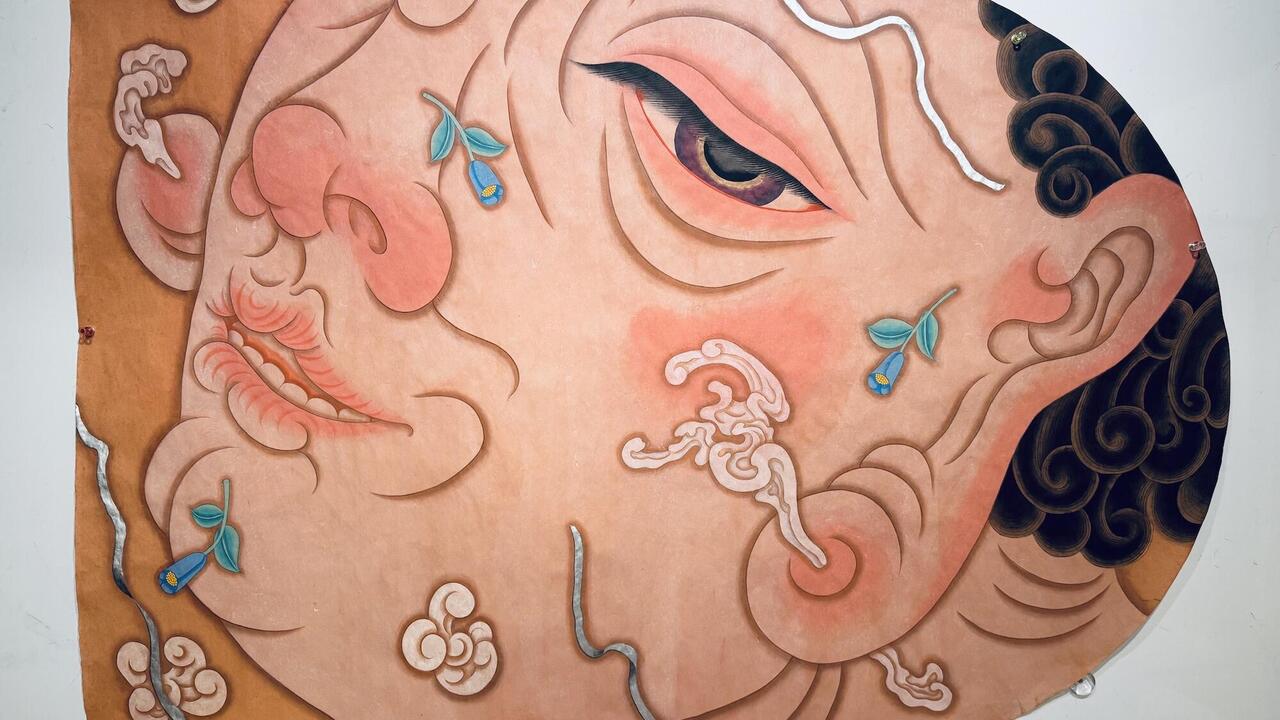Kerry Tribe

Events in Kerry Tribe’s work are not so much meant to be experienced as re-experienced – repeatedly, with varying degrees of familiarity, fantasy and fiction mixed in. The highlight of a carefully composed survey show, curated with wit by Melanie O’Brian, was the video installation There Will Be ____ (2012), which addresses the events of 16 February 1929 at the Greystone Mansion in Beverly Hills: Ned Doheny Jr. was found dead in his study, along with his personal assistant, Hugh Plunket. The mansion subsequently served as a set for countless Hollywood films. Projected in a black-box on a cinema-sized screen, the film plays with investigative method, presenting possible scenarios of what happened that night. In sequence, alternative versions are performed on location at the house by actors in period dress: a bungled contract killing, a passion-fuelled suicide pact, the impulsive reaction of a jealous spouse, and so on.
On one level, these narrative options seem motivated by a documentary intent to expose the truth. The accumulated episodes sometimes feature a detective interviewing the Dohenys’ servants, recalling or concealing details while citing specific times, presumably for a police report. However, There Will Be ____ stages a clever competition between different forms of memory and temporality, often shifting abruptly from rational and structured to surreal and inexplicable: Tribe explores how this competition can compromise understanding; the predicament is implied by the actors voicing clunky, clichéd dialogue, derived from scripts from movies shot at the mansion. However, she also intersperses dialogue with silent shots of isolated objects and surfaces – suggesting how seemingly disconnected things and spaces may serve psychological or pneumonic purposes. For example, a scene about a doomed gay affair – one recalls a despairing Hugh imploring Ned by citing the fact that they had been together for 20 years – is juxtaposed with a shot of darkness descending on a bare bowling alley with seductively aging wood floors (the site of a memorable murder scene in the 2007 film There Will be Blood). The importance of such relatively abstract, material qualities to Tribe’s project is further suggested by several small pictures in the exhibition, such as Absence/Abstract (2009), featuring only these titular words, palpably rendered in wax crayon and oil pastel.
As in There Will Be ____, Tribe’s film installation H.M. (2009) begins with an investigative pursuit. H.M., the subject of an exhaustive study at MIT that still serves as a basis for much of what we know about the brain, had part of his brain removed in the 1950s as a treatment for epilepsy. The seizures stopped, but H.M. lost all capacity for long-term memory; the procedure condemned him to an eternal present, 20 seconds long. Tribe provides composite interview footage – an actor plays H.M. – and stills of historical events that he cannot remember because they took place after his surgery. To evoke H.M.’s condition, this two-channel work uses a single strand of film threaded through two adjacent projectors with an interval of 20 seconds between them. The palpable (and audible) observation of the tandem projections brings about an awareness of the subject’s predicament, the tragically ephemeral nature of that brief interval. But a broader significance is also instilled by Tribe’s insertion of imagery with no direct relation to documentary-based narration: home-movie footage of a lake’s surface; prolonged and blurry shots of a lamp; and an animated sequence depicting cubic forms. Each of these may trigger our own struggles to recollect: one may choose, for instance, to actually relish the failure to objectively recall, dwelling on the shimmering skin of watery consciousness, without delving too deeply.
The value of much of Tribe’s already impressive oeuvre resides in the provocative and profound staging of relationships – between isolated words, textures, or objects on the one hand, and coherent narrative elements on the other – reflecting the subjective processes of memory and desire, and their susceptibility to a host of personal and societal pressures, including the ideological notion that there is one definitive version of the truth.















